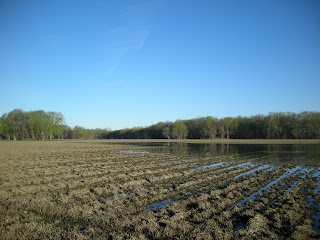When it comes to finding migrant waterfowl in the spring, there’s no secret among Hartford birdwatchers as to where to look. Most reports at this time of the year come from such local hotspots as Station 43 in South Windsor and the Glastonbury Meadows. It is here where you will often find the best variety of species as well as the largest congregations. But like every spring, getting to those favorite locations can be somewhat of a challenge.
In spring, snow melt from up north combined with long periods of steady rain can cause the banks of the Connecticut River to overflow. In floodplain areas like the South Windsor Meadows, this may prevent access to the river for up to two weeks. But as the waters recede, a temporary habitat is created consisting of standing pools of shallow water and mud.
These temporary holdings of water are very important to waterfowl throughout the spring migration. First and foremost they provide an abundance of nutritional food like invertebrates and plant seeds. Both the Northern Shoveler and Green-winged Teal can be found during migration in these shallow pools, heads partly submerged, as they sift for food from muddy water. Most flexible in their feeding habits, the Northern Pintail and American Wigeon will also take advantage of flooded farm fields by foraging in standing water as well as on saturated land.
Another important aspect of seasonal flooding is that it provides waterfowl with an additional place to rest enroute to their breeding grounds. Ducks who are routinely disturbed at popular birding sites may have the option to relocate to nearby environs, rather than travel a great distance to find refuge. Enough of this type of disturbance could cause stress and drain energy reserves at its most crucial time.
Regular visits to the river during the flood season can be very beneficial. Observers are often rewarded with close, unobstructed views of many beautiful duck species. Some flocks however may be distant, so having a spotting scope within arms reach is essential. While you’re scanning for ducks, bear in mind that other bird species such as Wilson’s Snipe and Killdeer favor those same nutrient rich “temporary” habitats.


No comments:
Post a Comment